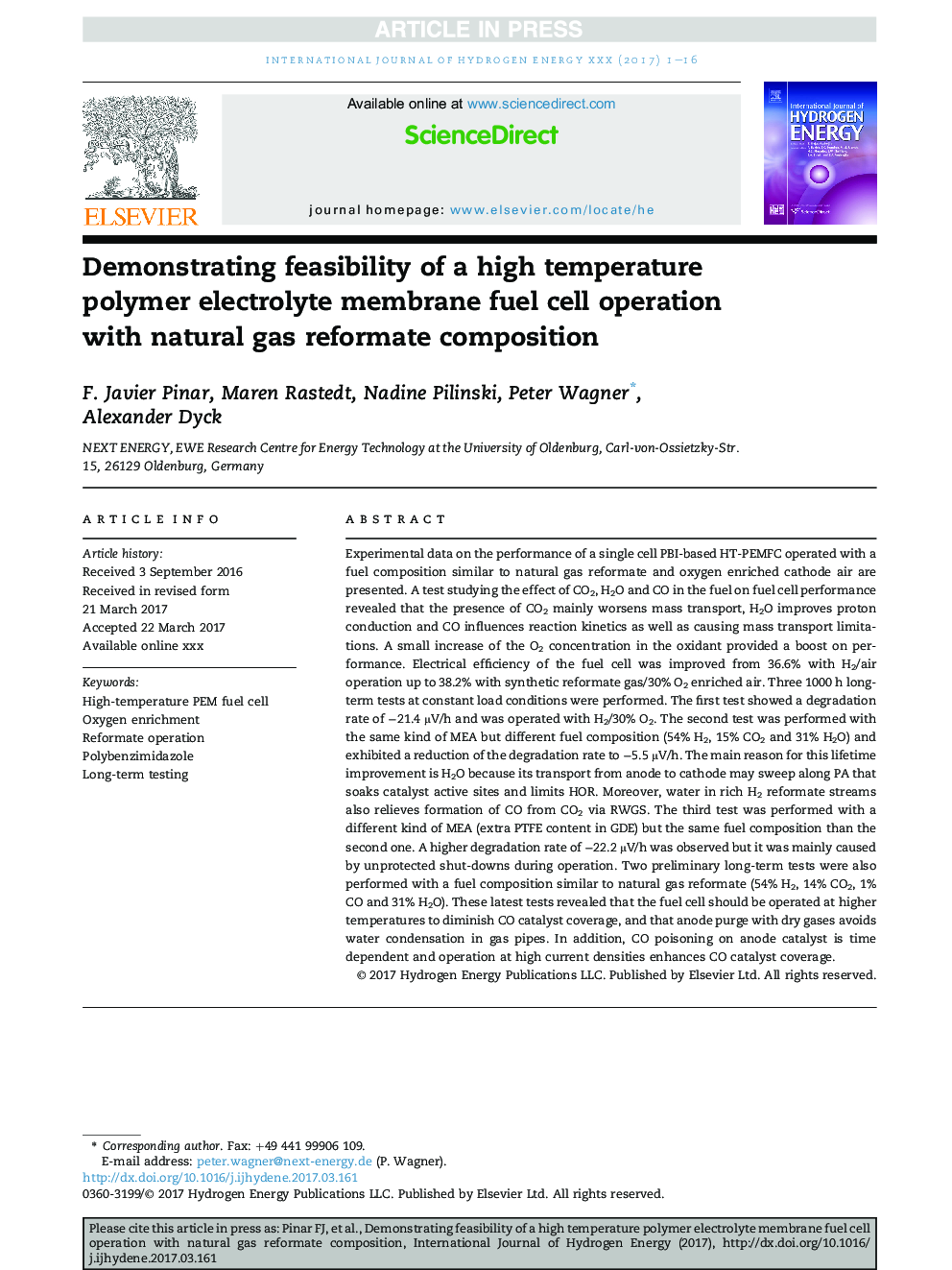| کد مقاله | کد نشریه | سال انتشار | مقاله انگلیسی | نسخه تمام متن |
|---|---|---|---|---|
| 5147331 | 1497358 | 2017 | 16 صفحه PDF | دانلود رایگان |
عنوان انگلیسی مقاله ISI
Demonstrating feasibility of a high temperature polymer electrolyte membrane fuel cell operation with natural gas reformate composition
دانلود مقاله + سفارش ترجمه
دانلود مقاله ISI انگلیسی
رایگان برای ایرانیان
کلمات کلیدی
موضوعات مرتبط
مهندسی و علوم پایه
شیمی
الکتروشیمی
پیش نمایش صفحه اول مقاله

چکیده انگلیسی
Experimental data on the performance of a single cell PBI-based HT-PEMFC operated with a fuel composition similar to natural gas reformate and oxygen enriched cathode air are presented. A test studying the effect of CO2, H2O and CO in the fuel on fuel cell performance revealed that the presence of CO2 mainly worsens mass transport, H2O improves proton conduction and CO influences reaction kinetics as well as causing mass transport limitations. A small increase of the O2 concentration in the oxidant provided a boost on performance. Electrical efficiency of the fuel cell was improved from 36.6% with H2/air operation up to 38.2% with synthetic reformate gas/30% O2 enriched air. Three 1000 h long-term tests at constant load conditions were performed. The first test showed a degradation rate of â21.4 μV/h and was operated with H2/30% O2. The second test was performed with the same kind of MEA but different fuel composition (54% H2, 15% CO2 and 31% H2O) and exhibited a reduction of the degradation rate to â5.5 μV/h. The main reason for this lifetime improvement is H2O because its transport from anode to cathode may sweep along PA that soaks catalyst active sites and limits HOR. Moreover, water in rich H2 reformate streams also relieves formation of CO from CO2 via RWGS. The third test was performed with a different kind of MEA (extra PTFE content in GDE) but the same fuel composition than the second one. A higher degradation rate of â22.2 μV/h was observed but it was mainly caused by unprotected shut-downs during operation. Two preliminary long-term tests were also performed with a fuel composition similar to natural gas reformate (54% H2, 14% CO2, 1% CO and 31% H2O). These latest tests revealed that the fuel cell should be operated at higher temperatures to diminish CO catalyst coverage, and that anode purge with dry gases avoids water condensation in gas pipes. In addition, CO poisoning on anode catalyst is time dependent and operation at high current densities enhances CO catalyst coverage.
ناشر
Database: Elsevier - ScienceDirect (ساینس دایرکت)
Journal: International Journal of Hydrogen Energy - Volume 42, Issue 19, 11 May 2017, Pages 13860-13875
Journal: International Journal of Hydrogen Energy - Volume 42, Issue 19, 11 May 2017, Pages 13860-13875
نویسندگان
F. Javier Pinar, Maren Rastedt, Nadine Pilinski, Peter Wagner, Alexander Dyck,